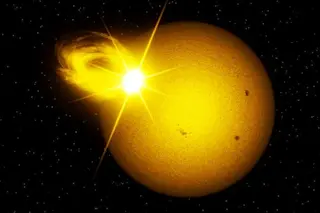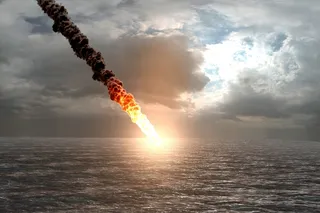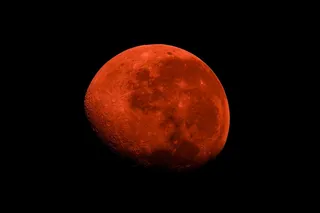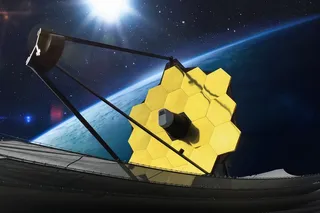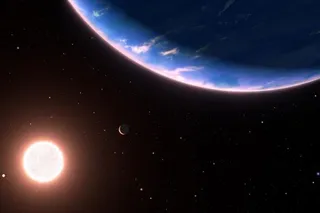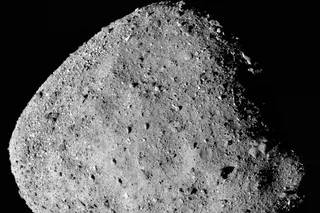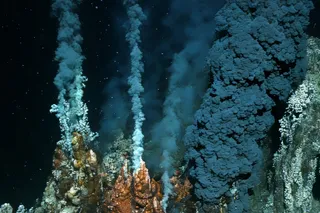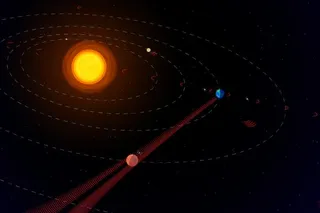If superflares are akin to celestial temper tantrums, then our Sun might get angry more often than previously thought, according to a report in the journal Science. A superflare, defined as a solar storm that releases over one octillion joules of energy within a short time, manifests itself in data as a short, pronounced peak in brightness.
Understanding superflares’ regularity can be useful, because they can be potentially damaging. For example, a violent solar storm in 1859 knocked out the telegraph network in parts of Europe and North America. That Carrington event, while one of the strongest solar storms of the past 200 years, released only a hundredth of the energy of a superflare.
If these events happen hundreds of years apart, how can scientists measure their frequency?
“We cannot observe the Sun over thousands of years,” Sami Solanki, an astronomer with the Max Planck Institute for Solar System Research (MPS) and coauthor of the paper, said in a press release. “However, we can monitor the behavior of thousands of stars very similar to the Sun over short periods of time. This helps us to estimate how frequently superflares occur.”
Learning About Solar Storms
The team monitored data from NASA’s Kepler space telescope from 2009 to 2013, which encompassed 56,450 Sun-like stars — meaning they only looked at stars whose surface temperature and brightness were similar to the Sun’s.
They also ruled out potential sources of error, such as cosmic radiation, passing asteroids or comets. The team detected 2,889 superflares on 2,527 stars — an average of one superflare per century.
“We were very surprised that Sun-like stars are prone to such frequent superflares," Valeriy Vasilyev a co-author from the MPS said in a press release.
Earlier studies by other groups determined that superflares occurred every 1,000 — or even every 10,000 — years. But those studies looked at a more limited number of stars.
Read More: Our Sun Is Capable of Producing Dangerous ‘Superflares’, New Study Says
Fewer Solar Storms Affecting Earth?
However, physical evidence of superflares impacting Earth points to bigger gaps than the average this study calculated. Violent solar storms impacting Earth leave behind signatures from a variety of radioactive atoms. These atoms are archived in tree rings and glacial ice. Scientists can detect these atoms even thousands of years after their influx.
Using this method, researchers have identified five extreme solar particle events and three candidates within the past 12,000 years — an average of once per 1,500 years, with the most violent occurring in A.D. 775.
However, it’s possible that not all superflares emit the same types and amounts of radioactive particles. If that’s the case, the number of events impacting Earth may be under-counted. And whatever the frequency, superflares are hard to predict. New space-based instruments are being developed to help forecast these solar storms.
Article Sources
Our writers at Discovermagazine.com use peer-reviewed studies and high-quality sources for our articles, and our editors review for scientific accuracy and editorial standards. Review the sources used below for this article:


